In this post, I will be reviewing Dai, a stablecoin that was created by MakerDAO and is backed by the USD.
Dai is run on the Ethereum blockchain and is created by users borrowing against locked collateral.
This crypto collateral can be viewed publicly on the Ethereum blockchain.
Forget the snippets above; as you continue reading, you will get to find out all about Dai, how it can be acquired, and how it’s stability is maintained.
Yeah … I can hear your curiosity clock ticking already. Let’s get started at once.
Post Summary
- What is Dai?
- How Dai Functions As Money
- The Maker Community
- How MakerDAO Keeps Dai Stable
- How to Generate Your Own Dai
- Reputable Exchanges to Buy/Sell Dai
- Top Wallets to Store Dai
- Frequently Asked Questions (FAQs)
- Conclusion
With the subtopics listed, let’s get down to business.
What is Dai?
Dai(formerly Sai) is a digital currency that has its value pegged to the United States Dollar.
Because it is pegged to a fiat currency, its value does not fluctuate like that of Bitcoin and other cryptocurrencies.
It is a stablecoin implemented as an ERC20 token on the Ethereum blockchain.
Unlike other centralized stablecoins, Dai is not backed by the USD in the bank.
Rather, it is backed by the collateral on the MakerDAO platform. This collateral can be viewed on the Ethereum blockchain.
Dai ranks as #30 on the coinmarketcap list of 100 coins with a market capitalization of $1,320,501,268 and more than 1 billion coins in circulation(as seen on CMC as of 7/1/2021).
It is one of the main components of many decentralized applications in the DeFi ecosystem that is built on the Ethereum blockchain.
With Dai, DeFi users are able to use the asset’s stability to lend, borrow, and invest in various different DApps.
Dai exhibits some characters of money. I explained how it functions as money in the next subtopic.
How Dai Functions As Money
For anything to serve as money, it has to serve these 4 purposes:
- Store of Value
- Medium of Exchange
- Unit of Account
- Standard of Deferred Payment
Now, I will explain how Dai serves these purposes.
Dai as a Store of Value
When you say something is a store of value, it simply means that it is something that retains its value with little or no depreciation over time.
Dai, being a stablecoin, serves this purpose as it retains its value even in the ever-volatile crypto market.
Dai as a Medium of Exchange
For anything to be used as a medium of exchange, it has to be something that can be used for the exchange of goods and services.
Likewise, Dai can be used to pay for things purchased or for a service rendered.
Dai as a Unit of Account
If you are talking about a unit of account, you are talking about a standardized measurement of value that is used to price goods and services.
For Dai, it is currently tied to the USD (i.e 1 DAI = 1 USD).
Though Dai is not used as a unit of account in a non-blockchain space, it serves this purpose in the Maker protocol and some other blockchain DApps.
Dai as a Standard of Deferred Payment
Dai is used to pay off debts e.g Stability fees, etc. within the Maker Protocol.
Here you have Dai’s money-like properties listed.
As I mentioned earlier, Dai was created by the MakerDAO project which is a part of the Maker Community.
Let’s go read about that in the next subtopic.
The Maker Community
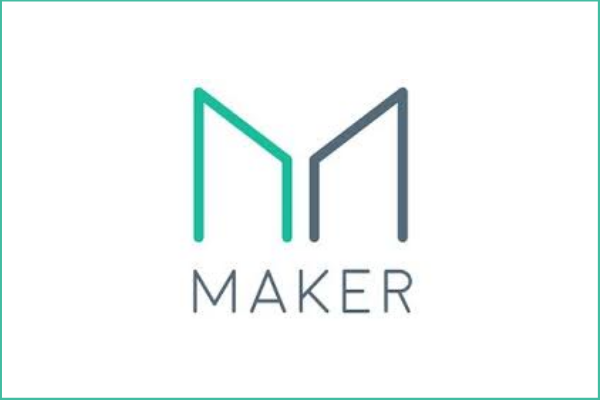
The Maker Community consists of the following:
- The Maker Foundation
- The Maker DAO
- The Maker Protocol
See details about them below.
The Maker Foundation
This foundation is part of the Maker Community.
It built and launched the Maker Protocol in conjunction with a number of outside partners.
Working with MakerDAO, it seeks to bootstrap this project to fuel growth and drive the organization towards complete decentralization.
The Maker Foundation board has Rune Christensen (CEO), Steven Becker (President and COO), and Sandy Khaund, Shefali Roy, and Tonya Evans as board members.
There is also a team of about 56 others that are part of the foundation.
The MakerDAO
MakerDAO is an open-source project on the Ethereum blockchain and a Decentralized Autonomous Organization.
By DAO(Decentralized Autonomous Organization), I mean an organization that is represented by rules that are encoded as a computer program. These codes are transparent, controlled by the organization members, and is not influenced by a centralized body.
It has 2 tokens: DAI and MKR
DAI token is the most prominent as it serves as the stable currency
MKR is the governance token of the MakerDAO and Maker Protocol. It acts as the voting right over the development of the Maker Protocol for the users who hold them.
The project is managed by users around the world who hold its governance token – MKR.
By a system of governance that involves Executive Voting and Governance Polling, holders of MKR also governs the Maker Protocol.
They get to decide on key parameters such as the stability fees, collateral types, and rates.
MKR voting power is proportional to the amount of MKR a voter stakes in the voting contract.
That is to say: the higher the number of MKR tokens locked in a contract, the greater the voter’s decision-making power.
The Maker Protocol
The Maker Protocol is built on the Ethereum blockchain.
Just as the MakerDAO project, it is managed by persons who hold its governance token, MKR.
One MKR token locked in a voting contract equals one vote.
This protocol is one of the largest DApps on the Ethereum blockchain. It was the first DeFi application to gain a significant adoption.
Here you have the information about the Maker Community.
Next, we are going to see how Maker gives Dai its stablecoin properties.
Find that in the next subheading.
How MakerDAO Keeps Dai Stable
It does this in these ways:
- Over Collateralization
- Automatic Liquidation of Risky CDPs
- Control of Supply via Financial Incentives
- Maker Dilution
- Emergency Shutdown
The details are below.
1. Over Collateralization
A common practice in the finance world is that you cannot have more debt than your collateral. This is also true for the MakerDAO ecosystem.
Your collateral on the MakerDAO must be atleast more than 150% but up to 200% is advised.
What this is saying is that if you have 100ETH, you are not going to get 100DAI. Rather, you will get about 75DAI and it is advised you generate just 50DAI.
This is because if the price of ETH drops, the collateralization ratio drops too.
Now, this will not be a problem because there will be enough ETH(collateral) to cover the value of DAI.
But if it is 100%, a drop in the price of ETH will leave DAI under collateralized.
2. Automatic Liquidation of Risky CDPs
This happens when the collateral fall below the minimum threshold of 150%.
During the liquidation process, your debt value, stability fee, and the liquidation penalty are removed from your collateral value.
You will then receive the value of the collateral left.
To avoid this, you have to manage your Collateralized Debt Position (CDP) well.
This requires you to always ensure that:
- the value of the locked-up ETH is always more than 150% of the DAI you generated
- you have sufficient liquid assets available that will be used to top up your position(in case it goes down) or sell for DAI to pay your debt.
**When your position goes down, you can either deposit more ETH or pay back some DAI.
3. The Control of Supply via Financial Incentives
This is all about influencing the market behaviour of people through incentives to control the supply of DAI.
This is done in 2 ways:
a. Arbitrage between the Contract Price and the Market Price
In acquiring DAI, you can get it from an exchange or by creating a CDP.
If in the market, DAI is in short supply, the value may become a little bit higher than dollars.
So you will be incentivized to borrow DAI from a CDP that assumes that 1 DAI = 1 USD.
This is because you can get 100DAI for 100USD in the CDP while you can get about 95 or less in the market.
Again, if it is cheaper in the market because of the abundance of DAI, you are prompted to get from DAI from the market.
You can then use it to pay off your CDP debt.
So here, the 2 forces at work is that of pulling down the price and that of pushing up the price.
If 1 DAI is more than 1 USD, people are incentivized to lock ETH and get more DAI. Thus pulling down the price of DAI.
But if 1 DAI is less than 1 USD, people are incentivized to pay back the loan and burn DAI. This pushes up the price of DAI.
b. Adjusting the Stability Fee
The Stability Fee can be adjusted by MKR holders following the dynamic price of DAI.
If the Stability Fee is high, it directly translates that the cost of borrowing for CDP users is high.
This will become quite discouraging for the borrowers as they will see no need of using the CDP.
Likewise, at a reduced Stability Fee, cost of borrowing will go down and consequently, people will be eager to use the CDP.
This will now result in people being incentivized to generate more DAI.
4. Maker(MKR) Dilution
Here, the MKR is used to cover for the unpaid debt.
As I pointed out earlier, MKR is used as the governance token in the Maker Community.
It also confers on its holders the rights to vote for risk parameters e.g Stability Fee, Liquidation penalty, etc.
This incentivizes MKR holders to keep the price of DAI stable.
So when an automatic liquidation fails, it cast the MKR holders in a bad light.
What the system does in this case is to generate more MKR tokens and sell them off in the market.
This will cover for the gap that was not covered by the collateral liquidation.
It will also cause MKR to decrease in value thus incentivizing the MKR holders to keep the system balanced.
5. Emergency Shutdown
Formerly known as Global Settlement, the Emergency Shutdown literally shuts down the system.
It closes up the system at the event of a system upgrade, a security breach, or at a disturbing market volatility.
Emergency oracles that are picked by the MKR holders trigger the Emergency Shutdown function.
But this does not mean that MakerDAO will stop operating completely.
The entire system is redeployed and then the CDPs are migrated.
Having learnt how DAI maintains it stability, let’s see the ways one can acquire DAI.
Let’s meet up in the next section.
How to Generate Your Own DAI
Every single Dai in existence has been generated by users locking collateral into the Maker Smart Contracts System and opening what is called a Vault.
So if you are looking to generate DAI, below are the steps on how to do that:
a. Go to the Oasis Portal and click on ‘Open a Maker Vault’ or just click on ‘Borrow’.

b. Click on ‘Connect your wallet’ to connect your wallet to the Oasis platform.

c. From the drop down menu, select a wallet to connect and scan the QR code.
Assuming I selected MyEtherWallet(MEW), I will go ahead and scan the code to connect my wallet. Then I will click ‘Get Started’.
d. Then choose a collateral type from the list below and click ‘Continue’.

e. Assuming I choose ETH-A, I will go ahead and click on ‘Continue’ which will open up a dialog box as seen below.

f. From my MEW app, I will click on ‘Confirm’ and enter my pin to confirm the transaction.
g. When the transaction has been confirmed, click on ‘Continue’ and follow the onscreen prompts to generate your Dai.
Note: You have to have enough ETH to cover for the fees before going ahead to confirm your transaction.
So that’s how you generate your Dai by locking ETH in the Maker Vault.
Only then will you be eligible to borrow (i.e generate) about two-third of the USD value of your collateral in Dai.
That is, your vault’s ratio of collateral value to the total debt must be above 150%,
So for every 1 DAI, you should have at least $1:50 worth of collateral locked in a Maker Vault.
Moving on now, we look at top exchanges where you can purchase Dai if the hassle of generating one is not for you.
Reputable Exchanges to Buy/Sell DAI
Top exchanges where you can buy Dai include:
i. Binance
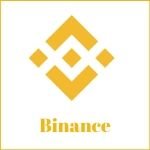
Binance (culled from Binary and Finance) has come to become a household name in the crypto space.
It is a trading platform that was founded in 2017 by Changpeng Zhao and supports over 450 coins.
Binance listed MKR and DAI in July 2020 with the following trading pairs made available – DAI/BUSD, DAI/USDT, DAI/BNB. and DAI/BTC.
With a variety of payment methods available, users can trade Spot, Limit, and Futures market on its platform.
This is aside other services provided by the exchange.
ii. Coinbase
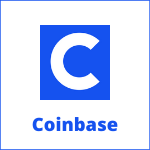
Coinbase is a trading platform that was founded in 2012.
The founders are Brian Armstrong and Fred Ehrsam and it is located in California.
Though it started off as a Bitcoin broker, it now offers a wide range of services e.g buy/sell of other cryptocurrencies, Coinbase pro, Wallet services, etc.
It supports over 15 coins including BTC, REP, DAI, ZEC, etc with the following payment options available:
- Credit/Debit cards
- Paypal
- Wired transfer(SEPA and ACH)
iii. Bittrex Global
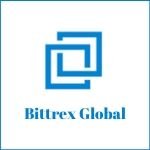
This is a trading platform that was founded in 2013 by Bill Shihara, Richie Lai, and Rani Kanach.
It has its headquarters in Seattle, USA and allows its users to make payments either through Bank Transfer or with the supported cryptos.
Bittrex Global supports more than 12 cryptos including BTC, DAI, ETH, etc.
The DAI trading pairs available are DAI/BTC. DAI/USDT, DAI/ETH, and DAI/USD.
Read Review Visit Bittrex Global
iv. OKEX
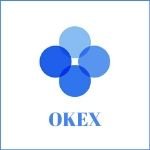
OKEX is a trading platform that is founded by Star Xu in 2014.
It provides support for up to 100 currencies including BTC, DAI, NGN, IOTA, etc.
With up to 12 payment options available, its users are able to access a lot of services e.g Spot Trading, Perpetual Swap, etc.
v. Coindirect

Coindirect is a P2P exchange that was launched in 2017.
It is based in South Africa and allows its users to make payments via Bank Transfer, Paypal, and Credit/Debit cards.
The exchange provides support for more than 40 coins including BTC, DAI, ETH, etc.
On this platform, you can either buy or convert one coin for another seamlessly.
vi. Gate.io
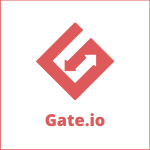
Gate.io is a trading platform that is operated by Gate Tech. Inc. and was launched in 2013.
The exchange provides its users the opportunity of trading both Spot and Futures in one place.
It supports up to 500 coins including BTC, DAI, ETH, etc. On this platform, you can trade the DAI against USDT.
vii. Changelly

Changelly is a non-custodial exchange that was launched in 2015.
The currencies supported are more than 140 coins which include DAI, BTC, ETH, etc.
Whether you intend to buy or swap your DAI, Changelly provides with a seamless way to do that.
A fee of 0.25% applies for BTC to DAI exchange along with a standard network fee.
Other exchanges where you can get DAI includes Huobi Global, Poloniex, Kraken, etc.
Let’s go on now to look at the wallets where you can store your DAI.
Top Wallets to Store DAI
Some of the top wallets where you can store your DAI are:
Find more details below.
1. Ledger Nano S
Ledger Nano S is one of the products of the Ledger company which was launched in 2014.
It is a popular hardware wallet that is renowned for its high security level.
The wallet supports the storage of over 1000 coins including ERC 20 tokens like ETH, DAI, EOS, etc.
It goes for 76.83USD excluding VAT and duty charges.
2. Trezor
Trezor hardware wallets are the first to waltz into the crypto security scene.
With the word ‘Trezor’ meaning ‘Vault‘, it serves exactly like a physical vault for your coins.
Its products – Trezor One and Trezor Model T both support the storage of DAI and other notable coins.
The Trezor wallets possess great user interface and are worth their prices.
3. MetaMask
MetaMask is a crypto wallet that was launched in 2016.
It is a non-custodial wallet that stores your seed phrase encrypted with a password.
The wallet provides support for thousands of ETH tokens including ERC 20 and ERC 71 tokens.
Metamask is available in both desktop and mobile versions.
4. MyEtherWallet (MEW)
MEW is a crypto wallet that was launched in 2015.
On this wallet, the private key is stored offline thereby making it less vulnerable to hackers.
It supports ETH and all ETH related coins e.g ETC, DAI, EOS, etc.
MEW is now available in both the web and mobile versions.
5. Coinomi
Coinomi is a crypto wallet that was launched in 2014 by George Kimionis.
It is an HD wallet (i.e able to create a recovery phrase) and comes with an inbuilt exchange feature. This way, you can swap one coin for the other.
The wallet provides support for over 125 coins including ERC 20 tokens.
Coinomi is available in Android, iOS, MacOS, Linux, and Windows version.
6. Exodus
Exodus is the first multi-asset desktop wallet but is now available in mobile version(Android and iOS).
The wallet was launched in 2015 by JP Richardson and Daniel Castognoli.
Its features include live charts and portfolio, built-in exchange, and 24/7 human support.
Exodus provides support for more than 100 coins including DAI, EOS, BTC, TRX, etc.
7. Trust Wallet
This is a crypto wallet that is owned by the global exchange, Binance.
It provides support for multiple cryptocurrencies(up to 160,000) and 40 blockchains.
In this wallet, you can buy and swap your coins with the option of paying with your credit card.
It is available in the iOS and Android version only (i.e as at the time of this post.
Other wallets you can use include Jaxx, Edge, Ethos Universal Wallet, etc.
Now you have the wallets where you can store DAI.
I am about wrapping up the post dear reader, but before that, let me answer the question of how safe it is to invest in DAI.
Come with me to the next section to read all about it.
Is It Safe to Invest in DAI?
From all ramifications, DAI has shown great potentials for survival in the crypto and DeFi space.
I make this assertion considering the chart from Coin Market Cap (as of 6th Jan. 2021).

We saw an exponential rise(100%) in its market cap with the following figures:
- January 6th, 2020 – Market cap. = $0
- January 6th, 2021 – Market cap. = $1,319, 433,012.3322
Within the time it has existed(2019 – early 2021), we saw it make its way to the 30th position on the top 100 coins on coinmarketcap (as of 6/1/2021) surpassing so many others.
Again, it has come to become a known coin in the DeFi verse especially when staking and borrowing.
Now you might think because there is no maximum amount of coins to be generated, a lot of coins may be in circulation and that will affect the price.
Not at all!
You remember it is a STABLECOIN and as such, it is pegged to the USD to hedge against price volatility.
So whether we have 5 DAI tokens or 1,000,000 DAI tokens in circulation, its price will still be pegged to the USD.
This way, it serves a good store of value even when borrowing too.
It also became part of the governance of Klatyn as announced by Klatyn on the 2nd of November 2020.
With the whole increase in market cap and increased adoption of Dai, I must say it possesses great investment potentials.
But as the crypto trading rule 101 states: Don’t ever invest more than you can afford to lose!
Always keep this advice handy before embarking on any investment spree in the crypto-verse. DYOR too.
Disclaimer:
I am not in any way a financial adviser neither do I give out financial advice.
All opinions aired here are solely mine which I got from my research and should not be seen as a piece of financial advice.
Conclusion
With this section comes the end of the DAI post. Hope you enjoyed reading through?
Within the body of the post, I talked about Dai and its founder – the Maker Foundation.
I also listed top exchanges and wallets for DAI and gave reasons why I think it is a good investment.
Now, let me hear what you have to say about the post of today:
Do you own Dai tokens and how did you acquire them – via exchanges or you generated it?
Where do you hold your Dai token (if you own one)?
What is your take on how the Maker Protocol maintain Dai stability?
Do you have your own questions to ask?
Leave me all that you’ve got(replies, questions) in the comment section below.
Do share this post using the social media buttons below to help educate others.
Check out the review of other coins:
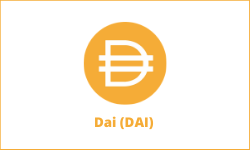








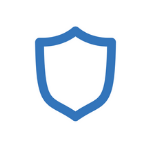


0 Comments